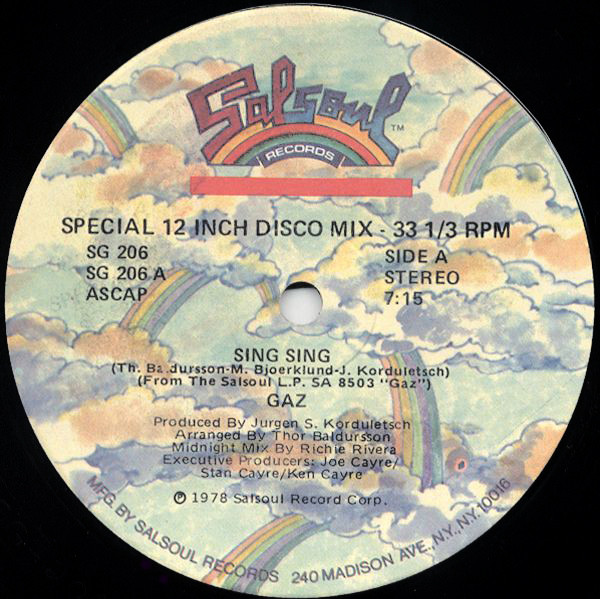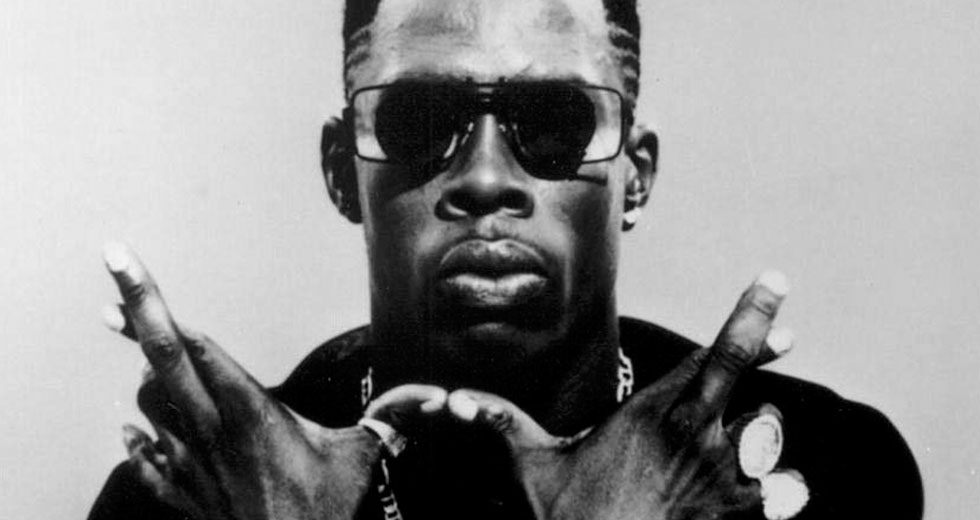Diwali Riddim: A Loop History
Akash Chohan explains the origins of a dancehall / hip hop classic
In 1998, Jamaican producer Steven “Lenky” Marsden created “Diwali Riddim.” Named after the Hindu festival of light, it consists of a series of distinct, syncopated handclaps, a hypnotic sound harking to the music played at Punjabi folk dances, called Giddha. The rhythm which ties the handclaps and Giddha together, too, is characteristic of that commonly associated with the Dhol: a large, double-headed drum whose origins can be traced back to the 15th century, first used in the ceremonies of Sufi mystics and their followers.
Fast-forward hundreds of years and “Diwali Riddim” has looped back on itself, with collaborations with ’00s UK desi diasporic musicians as well as US and Caribbean hip hop, dancehall and R&B artists. Though it’s formed the foundation of hits such as Sean Paul’s “Get Busy,” Wayne Wonder’s “No Letting Go,” Lumidee’s “Uh Oh” and Brick & Lace’s “Love is Wicked,” the true and lasting influence is both far reaching and difficult to ascertain.
Short of the 180 listed entries of the track on the Riddimbase archive, there are hundreds that use its infectious framework still waiting to be categorized. To find out how the traditional instrumentation of the Punjabi region of pre-partition India and Pakistan came to be the blueprint for some of dancehall’s biggest crossover hits, we need to rewind to the ’80s.
Like other cultural groups before them, a generation of Punjabi migrants were searching for a sound that spoke to their experience. By taking instruments like the Dhol and the Tumbi and experimenting with UK-centric electronic music genres such as garage, the UK desi diaspora created bhangra. The deceptive simplicity of its polyrhythmic patterns remained popular well into the late ’90s, prompting artists such as Punjabi MC to elaborate upon and draw people’s attention to the style (notable examples include his collaboration with Jay-Z, “Beware”) by concentrating heavily on the Dhol and Tumbi elements of their tracks. By the early ’00s, this cross-cultural inspiration had evolved in the pop world with complex consequences.
This cross-cultural inspiration wasn’t a one-way street, though. UK desi diasporic artists before Punjabi MC, like Apache Indian, benefited off appropriating Rastafarian culture in the early ’90s. Bally Sagoo, another successful artist of the UK desi diaspora, said in ’03, “Mix it [our music] with hip hop, rap and reggae, because that’s the style of music that a lot of people listen to. And probably even more can hear it is it is collaborated with Asian stuff.”
Intrigued by South Asian-sounding beats, US producer Timbaland looked to Punjabi music to create signature templates for Aaliyah and Missy Elliott, among others. His ’03 hit “Indian Flute” initially sampled Colombian artist Totó La Momposina’s ’92 track “Curura,” but in adding a Hindi vocal from Mumbai-born singer Rajeshwari Sachdev, he would effectively erase the South American connection. Perhaps this was in order to ride a wave of growing interest in desi instrumentalism. (Erick Sermon’s “React,” Method Man and Redman’s “What’s Happenin’” and Jay Z and Kanye West’s “The Bounce” had incorporated Bollywood samples, and were released within a year of each other.)
Where positive collaboration and cultural appropriation begin and end exists in a sandstorm of situational bias and questions of artistic authenticity. Things become clearer, though, when the original, musical pattern – when superimposed using different instruments – is distinctly there, but far enough away to become something else entirely. This is what arguably separates “Diwali Riddim” from other, similar riddims up until the point of its release. Though the Punjabi influence is in the distinctive handclaps, the digitally programmed drums and synth stab components make the beat distinctively dancehall. Both desi diasporic and Jamaican artists directly benefited from the making and popularising of “Diwali Riddim”: a positive view of cross-collaboration, rather than of appropriation; as the riddim spread from Jamaica to the rest of the world, starting with Lenky.
Before playing keyboard part time for Lloyd Parks & We The People Band, Lenky spent three years playing tourist resorts on the north coast of Jamaica, soaking up jazz and Latin influences that he incorporated into Kingston’s dancehall scene, on his return in ’92. Though he would work with Lloyd Parks for another five years as well as forming his own band, it wasn’t until he met dancehall innovators Sly & Robbie that Lenky was presented with an opportunity to enter the industry proper as a studio musician. A collaboration with Bounty Killer on the B-side version of ’96’s “Maniac” led him to return to live performance as a keyboardist for Buju Banton’s Til Shiloh band in the early ’00s, which in turn led to credits on three of Banton’s albums during the decade.
Initially, noted Lenky, "no one wanted [Diwali Riddim] because no one knew what it was. I was trying to give it to [vocalists] and they say it was too ‘noisy-sounding,’ so I put it back in my drawer." Not for long, though. Versions of “Diwali Riddim” began to emerge on Jamaican radio in ’01-02 as a handful of lesser-known artists jumped on it, the most popular of which was Danny English and Egg Nog's "Meet Me at the Party” and Buju Banton’s “Sha La La.” Its radio play was in large part thanks to Jamaican label Greensleeves Records, whose Rhythm Album compilation series had been enjoying success in the admittedly small, homegrown music market. When “Diwali Riddim” was released as part of the series in ’02 it sold roughly 40,000 copies in four months: four times the average sales in comparison to the instalments before (and since).
Greensleeves A&R Director Cracknell believes that “Diwali Riddim” remains “a hard one to follow. It’s given riddims credit outside of the speciality [Jamaican] market.” Bolstered by the inclusion of a remix of Rihanna’s “Pon de Replay,” the tracks from the compilation began to spread to the US and Lenky started to get name-checked in major North America music publications about this strange, new crossover of sounds. "The president of Interscope Records saw the feature done on me in The New York Times and he asked his A&R people to find me," Lenky told Splash. Hearing the riddim getting airtime, and on the strength of the Rhythm Album sales, VP Records contacted Lenky about working with one of their rising stars, Sean Paul.
At this point, Paul was well acclimatized to the riddim process. He had mine-sweeped explosive instrumentals such as “Playground” for his track “Infiltrate” and Black Shadow’s “Buzz Riddim” for “Gimme The Light.” Lenky’s riddim, though, was to prove a cross-cultural breakthrough. “When another artist do a song [on a riddim] and it blow up big, it gives me exposure, too,” says Paul, “and so everyone else who’s on my riddim now, they can’t hate on me.”
Adding an uneasy, rapid piano loop in the verses and a catchy English-language hook and melancholic violin elsewhere, Lenky and Paul gave “Diwali Riddim” a club-orientated bounce more attuned to a contemporary hip hop audience and “Get Busy” was born. After heavy rotation on MTV Base between mainstream hip hop and R&B singles, its popularity soared. “Get Busy” became Paul and Lenky’s first US Billboard #1 single and the offers for Lenky came rolling in: he was signed to EMI Publishing, shared writing credits with Timbaland and produced and wrote for Paul’s Grammy Award-winning, double-platinum selling album, Dutty Rock.
Aside from Lenky’s personal successes, “Diwali Riddim” continued to breathe new life into the dancehall and pop crossover market. Reggae and R&B artist Wayne Wonder utilised it on his ’03 hit “No Letting Go.” In the UK, Jay Sean and Juggy D’s “Dance With You,” produced by Rishi Rich, was a collaboration between three Punjabi desi diasporic artists from the south of England, and the B-side features a rare “Diwali Dancehall” 12-inch remix of the single, featuring Wonder – the rare instance where dancehall and bhangra were involved from the jump. The microphone baton passes between Wonder and Jay Sean over a virtually untouched version of the original “Diwali Riddim,” save for some accentuated Tumbi elements.
Players bring their own flavour to the game. There’s space for everyone.
In a ’03 interview with VIBE, Paul’s manager Jeremy Harding voiced his concerns about the dancehall industry not being given the credit it deserved in the US market. “You can’t use our music without telling the people that it’s dancehall. As kids growing up in Jamaica, we love and admire all these R&B and rap artists, the mistake we make is to think they are loving and respecting our music.” Paul echoed his sentiments, as the specific silence from artists such as R Kelly who were using Jamaican riddims at the time, and, more recently, artists such as Gwen Stefani in ’14, spoke volumes. “We need people to know that them get the influence from dancehall and reggae. We love your music, too. But you can’t be using ours without telling the people that it’s dancehall. That is our culture.”
Speaking to the Jamaican Observer this year, though, Paul said that "[“Get Busy”] was a big accomplishment for myself, everyone involved such as producers, other artists on the riddim and dancehall music in general. I am proud to be part of a big staple dancehall riddim. This only means that you've made cultural history!!! Players bring their own flavour to the game. There’s space for everyone."
This space has now been occupied by myriad artists, and the riddim’s appeal continues into the ’10s: Nigerian record label E.M.E. released their own version in 2012, “London Girl," and Kenyan collective Sauti Sol’s “Shake Yo Bam Bam” saw international airplay when it dropped this summer, too. Idiosyncratically arranged and released nearly 20 years after Lenky’s original, those who stay on this axis continue to tap into “Diwali Riddim”’s sustained appeal: as a game-changer in the Jamaican and world-pop music industries that remains as distinctive as ever.

